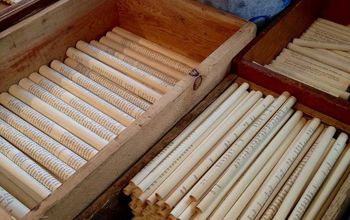How to get rid of purslane
-
Catch it early when it is young and pull up or hoe and let roots dry. If yo try to get it when it is older it can reseed and you have to get the root up or it will keep growing. This is my favorite tool: http://www.amleo.com/handy-weeder-5in-blade/p/510HW/
 Kathy.
on Dec 14, 2015
Helpful Reply
Kathy.
on Dec 14, 2015
Helpful Reply -
-
Since this is a vegetable garden you have to be careful of harmful chemicals.Try to use a good weeding tool first and then install a heavy landscape fabric making sure it is the porous type to allow for drainage and hopefully you can keep the situation under control.
 Janet Pizaro
on Dec 14, 2015
Helpful Reply
Janet Pizaro
on Dec 14, 2015
Helpful Reply- See 1 previous
-
-
You can rejoice in it and add it to salads - for real!
 Keller
on Dec 14, 2015
Helpful Reply
Keller
on Dec 14, 2015
Helpful Reply- See 1 previous
-
-
Eat it! very healthy good in salads. Wish I had some.
 Cheryl Blanchette
on Dec 14, 2015
Helpful Reply
Cheryl Blanchette
on Dec 14, 2015
Helpful Reply -
-
Purslane is very invasive and even harder to get rid of. If you want to do it without using any type of chemicals, the first step is to try and contain it so it doesn't takeover your yard by putting a physical barrier (like bender board) to stop the roots from spreading any further underground. When you "retire" your garden for the season, a couple of things you could try would be to deep water the area right before freezing weather starts (to try to freeze the roots), or in a non-freeze area cover the area with layers of newspapers and top with black plastic to keep it from sprouting in the spring; when you're ready to plant, transplant through the layer of newspaper and mulch to cover it up. It will take a two or three years but most of the roots should be suffocated by then, however, you'll never be completely free of it. Good luck!
 Victoria Cross
on Dec 14, 2015
Helpful Reply
Victoria Cross
on Dec 14, 2015
Helpful Reply- See 1 previous
-
-
Pull it up and plant in a pot and give to your friends. Makes great hanging baskets and they sell it here for a high price.
 Julie
on Dec 14, 2015
Helpful Reply
Julie
on Dec 14, 2015
Helpful Reply -
-
For killing off weeds and weed seeds, use black plastic as a cover and let the area bake in the sun for a few months. The problem with weeds and their seeds is that they can lay dormant for years. Many invasive plants spread by runners too which burning the plants under thick black plastic could solve your problem. What you are doing with the cardboard and mulch is good too but you may need to use the sun to destroy the plants. This will take a couple months to do. You could also do another alternative and that would be to do raised beds and use heavy cardboard as the base under and fill with good top soil and start over. Do not use landscape fabric because it is a waste of money and it is not really not that great for controlling weeds. Using newspapers and cardboard is eco friendly and breaks down too which is much better for the soil.
 The Garden Frog with C Renee
on Dec 14, 2015
Helpful Reply
The Garden Frog with C Renee
on Dec 14, 2015
Helpful Reply- See 2 previous
-
-
Someone just reminded me of a solution
 Dianne
on Dec 15, 2015
Helpful Reply
Dianne
on Dec 15, 2015
Helpful Reply -
Related Discussions
GNATS - How to get rid of them?
Somehow my house and garden got tiny gnats that killed my fuchsia plant and fly everywhere. I have tried ALL the Web recommendations - soap and oil dishes, sand in th... See more
Marigolds growing! Should I pinch the buds?
My marigold plants are growing. I heard that pinching the buds until Autumn will allow them to grow without killing the plant. Is this true?
Growing garlic
Growing our first garlic, should we wait until the leaves are drying out before we pick it? Husband picked first one today along with our first potatoes.
How to keep mice out of your garden?
Hi everyone, I have mice in my garden destroying my vegetables and I have also noticed them in the barn and shed. Please can someone tell me how to prevent them from ... See more
What's the best flower/plant to grow in Texas?
I know that opinions vary, but what's your opinion?!I have great luck w Rosemary plants. Green all year long.
How can I get rid of poison ivy in my yard and on the fence line?'
I've sprayed with something specific for p.i. and also Roundup, but the p.i. still keeps coming back.
How do I get rid of urine smell on my bushes ?
my neighbors dog keeps urinating on my shrubs and plants..is there a way to get rid of the smell?


